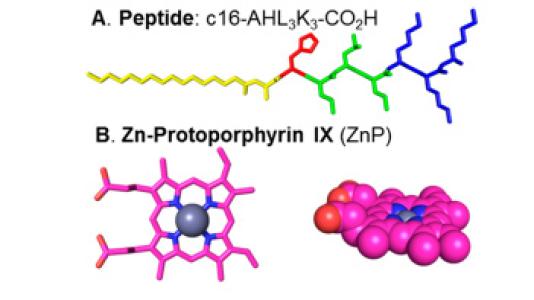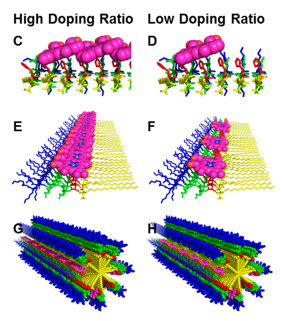
Scientific achievement
This unique framework allows study of energy transport in a synthetic photosynthesis process using a self-assembling peptide-amphiphile (PA) molecule as a scaffold for Zn-porphyrin (ZnP) chromophores.
Significance and impact
Low ratios of ZnP:PA increase spacing in the molecule and improve exciton diffusion, thus linking a controllable parameter to improved light-harvesting capabilities.

Research details
- We created samples at the Center for Nanoscale Material (CNM) with varying ratios of ZnP to PA, analyzed all samples with multiple spectroscopy techniques, and studied the exciton diffusion process.
- This study used CNM capabilities: UV/vis, circular dichroism, and electron microscopy as well as time-resolved photoluminescence and transient absorption spectroscopy.
Argonne National Laboratory seeks solutions to pressing national problems in science and technology. The nation’s first national laboratory, Argonne conducts leading-edge basic and applied scientific research in virtually every scientific discipline. Argonne researchers work closely with researchers from hundreds of companies, universities, and federal, state and municipal agencies to help them solve their specific problems, advance America’s scientific leadership and prepare the nation for a better future. With employees from more than 60 nations, Argonne is managed by UChicago Argonne, LLC for the U.S. Department of Energy’s Office of Science.
The U.S. Department of Energy’s Office of Science is the single largest supporter of basic research in the physical sciences in the United States and is working to address some of the most pressing challenges of our time. For more information, visit https://energy.gov/science.